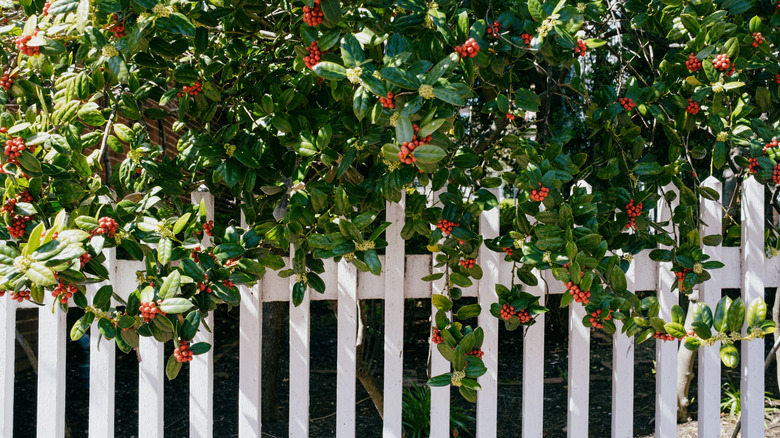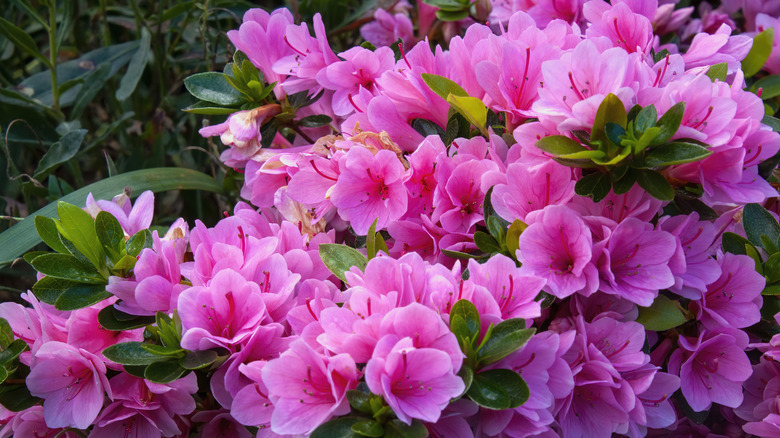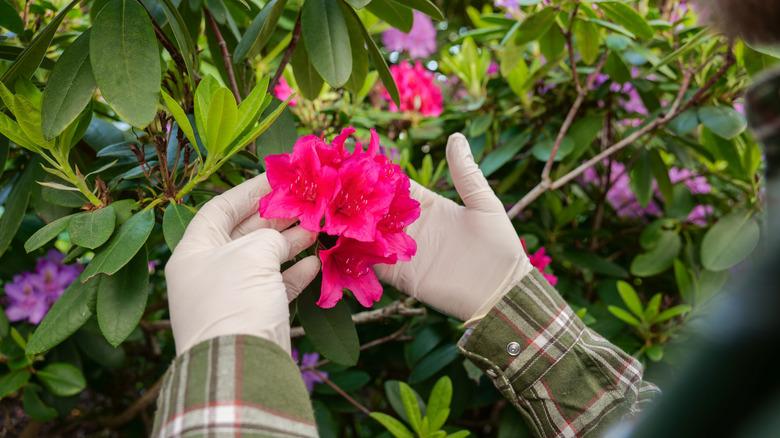Flowering Companion Plants That Complement Nellie Stevens Holly Privacy Trees
Holly might not normally seem like a large enough plant to use for privacy, but that's not the case with this cultivar. Nellie Stevens holly (Ilex 'Nellie R. Stevens') can actually reach heights of 30 feet and widths of around 25 feet. Additionally, unlike most hollies, it can produce beautiful berries without a male holly plant nearby. As beautiful as it looks on its own, Nellie Stevens holly is even more elegant when planted alongside beautiful flowering shrubs like azaleas and rhododendrons.
Both azaleas and rhododendrons are part of the Rhododendron genus, and as The American Rhododendron Society notes, "All azaleas are rhododendrons, but not all rhododendrons are azaleas." Colloquially people use rhododendron to refer to plants in that genus that are not azaleas, and unlike azaleas, have thick and leathery leaves. Given their close relationship, it's no surprise that azaleas and rhododendrons thrive in similar settings. It's fortunate for people growing Nellie Stevens holly that these plants also happen to thrive in similar conditions. This creates amazing opportunities to bring even more beauty and vibrance to your privacy tree barrier.
Azaleas as companions for Nellie Stevens holly
Nellie Stevens holly is hardy in zones 6 through 9, which gives it plenty of overlap with the hardiness zones of azalea. The flowering shrubs are generally perennial in zones 5 through 9, with some cultivars hardy down to zone 4. Nellie Stevens holly, like other kinds of holly, thrives in acidic soil, as do azaleas. So before you plant your holly or azaleas be sure to measure the pH of your soil and amend it if necessary. Both Nellie Stevens holly and azaleas also benefit from growing in well-draining soil.
Nellie Stevens holly grows best in full to part sun locations, and azaleas are happy growing in partial shade. This works out perfectly, allowing the azaleas to thrive in the shade cast by your taller holly plant. With most azaleas only reaching heights of around 6 feet and many no taller than 4 feet, they're perfect for planting in front of Nellie Stevens holly to add additional spring interest thanks to their stunning blooms. Even better, some types of azaleas are evergreen, meaning they'll be able to work alongside the similarly evergreen holly to provide winter interest in your landscape.
Growing rhododendrons and Nellie Stevens holly together
Like azaleas, rhododendrons thrive in acidic and well-draining soil, much like Nellie Stevens holly. Rhododendrons are also happy to grow in the dappled and filtered light of other, taller plants. Unlike azaleas, which generally stay relatively small, rhododendrons can grow as large as 30 feet, though most are closer to 10 or 12 feet tall, depending on the cultivar.
Most of the plants that are referred to as rhododendrons are evergreen. Some are even native to the Southern United States. This makes them a great way to include more native plants in your landscape design. Of course, you don't necessarily have to choose between pairing your Nellie Stevens holly with azaleas or growing it with rhododendrons. You can easily grow all three plants together, following the trend of layering evergreens for privacy and beauty. Consider growing your azaleas towards the front of your border with taller rhododendrons behind them. And then grow your Nellie Stevens holly in the back to create a stunning landscape arrangement that not only offers privacy but also year-round interest.


